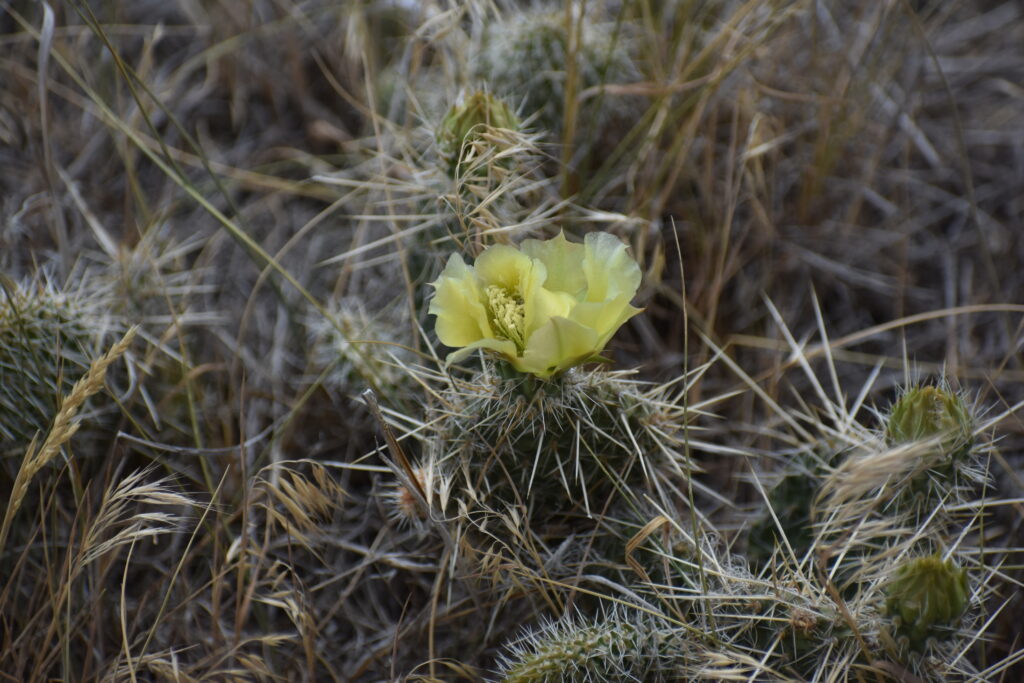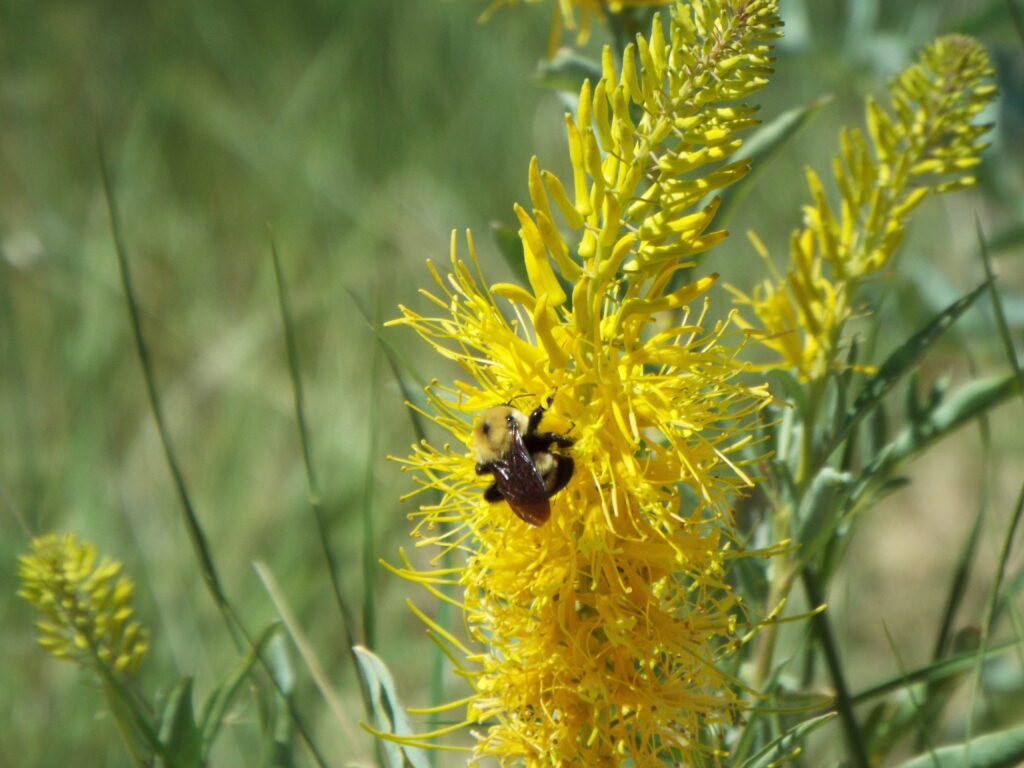News
Wyoming State Flower Adopted February 1917

The practice of choosing a flower to represent each state started in 1893 during the Chicago World Exposition. During the event, the group World’s Congress of Representative Women at the exposition’s “Women’s Building”, brought up the idea of creating a National Garland composed of flowers representing each state.
Each of the 50 states has a state flower. The first state to choose it’s own flower. The coast rhododendron, was Washington in 1892. It was exhibited in the World’s Fair in Chicago in 1893. There, the idea was proposed to have a ‘National Garland’ of flowers representing each state in the union. The last state to adopt a flower was Oklahoma, that adopted the Oklahoma Rose in 2004.
There was the suggestion of having a national flower, as some countries do, but this from The Laramie Daily Boomerang on December 12, 1893 – Among the many suggestions concerning a national flower, one which comes from a Vermont farmer who proposes that we shall not attempt to settle upon a national flower, but let each state choose a state flower, and have a “National Bouquet,” composed of all the state flowers.
Already certain states have emblems which would make very appropriate and pretty elements in such a great American nosegay. Massachusetts people prefer the trailing arbutus for an emblem. California, on the other side of the continent, has by law adopted the eschscholtzia or poppy as its state flower. The cedar sprig of Vermont and the pine branch of Maine “would contribute a needed tinge of green to the nosegay, while the orange blossom of Florida would lend its fragrance, and the mountain laurel of Alabama would crown it resplendently. The goldenrod and the aster would belong to the first state which should formally adopt them, and so would the graceful shooting star of the central west and the prairie rose. There are flowers and trees enough to “go around.’
A bouquet composed of all these state flowers and tree branches would grace all formal occasions and would typify the union of the states. It would say “Epluribus unum” to the ordinary intelligence more plainly than the Latin motto does.— Youth’s Companion.
There were several ideas as to what should be choose for the state flower. This from Bill Barlow’s Budget, in April 15, 1903.
A recent request from the officers of the World’s Fair again calls attention to the fact that Wyoming has not selected, officially a state flower, as most of her older sisters have done. It is proposed to combine these floral commonwealth emblems in advertising soon to be issued and in the decoration scheme of one of the prominent buildings.
Application made to the governor for the name and description of Wyoming’s state flower was referred to Prof. Aven Nelson, botanist of the state university, who ‘tis said will recommend that the Rocky mountain fringed gentian be selected.

If the gentleman will entertain amendment to his motion I would offer a far more fitting flower more common more beautiful and more typical by far-is the cactus-bloom. Modest and unassuming the offspring of a despised plant-and yet the glory of our arid domain during early summer, whose delicate tints put to shame the best efforts of the old masters and are only duplicated by the brush of Deity.
It is typical too of the pioneer who first chose this portion of the Great American desert as his home, and in spite of savage foes, climatic difficulties and the monotonous mutations of a wanton wilderness, built on what once was a waste of sagebrush and sand a common wealth toward which today the eyes of the world are turned, and with prospects and resources such as no other state can anticipate or possess.
True, we have flowers galore, from the flaunting goldenrod to the modest violet; but if we are to have an official flower let it be the cactus and none other born of the desert yet an emblem of fertility; the floral diadem of nature’s garden; true type of that which grows and thrives and reaches full fruition in spite of blazing sun and an eternity of drought, and the death-dealing, life destroying blizzard.

Wyoming’s flower, the Indian Paintbrush, was adopted in Feb. of 1917, and signed into law at the same time as the Wyoming State Flag.
From the Wyoming Times, Evanston on February 8, 1917 – Wyoming now has an official state flag and an official state flower. Governor Kendrick has signed original Senate File No. 25, which adopts as the state flag a banner designed by Miss Vera Keays of Buffalo, and original Senate File 26, which adopt the Castillija Linariaefolia, otherwise known as the Indian paint brush, as the state flower.
Even after it’s adoption, not everyone was in favor of the Indian Paint Brush having the honor of representing our state. This from The Wyoming Student, University of Wyoming, Laramie February 8, 1917 – Regarding The State Flower. The matter of a state flower is a pretty bit of sentiment that is decidedly commendable and the legislature is certainly to be congratulated for deeming it of sufficient importance to warrant legislative action. Nearly every state has its state flower, and it seems to add a pleasing bit of individuality to think of a certain plant as typifying the spirit of a particular state. The California Poppy, for instance, seems to represent the sunny Pacific coast and the splendid blue and white Columbine brings the Colorado mountains vividly to mind.
A state flower, like a state flag, or a state tree, is surely worth while and should be carefully selected. A state flower should be a beautiful one or people will not care to have it represent their state. It should be one that the people may come easily to recognize and it should be found in many localities and not restricted to a limited portion of the state. Other qualities, such as being easily cultivated or lending itself to decoration, are certainly desirable, but these first are fundamental.
A week or so ago the Wyoming legislature, on the recommendation of the D A. R., chose that particular kind of red Indian Paint Brush, known to botanists as Castllleja Cinariaefolia, to represent our state. The question naturally arises whether or not this choice was a wise one and whether Castllleja cinariaefolia meets the requirements suggested.
Individual preferences vary to such an extent that no one person may say that a thing is not beautiful or that it is beautiful, and speak for the people of the state. It may be said, however, that in beauty of form and color, Wyoming’s recently chosen flower cannot compare with the Columbine of Colorado, the Sego Lily of Utah, or the Pasque flower of South Dakota. It is true that some species of the red Indian Paint Brush are very beautiful, but these species are usually quite local and not statewide.
The principal criticism about the choice of the Castilleja Cinariaefolia as a state flower is that it may not be recognized by the people. This statement is made without fear of contradiction. There are perhaps twenty species of the Indian Paint Brush within the state that might easily ‘be confused with the state flower. Some, of these are showy and striking, some are dull and ugly, some grow on dry hillsides and some in swampy meadow, some at low altitudes and some near the timberline. They are all very similar and yet, when seen, together, very different.
An expert botanist is the only one who may say “this is our state flower,” with any degree of certainty. Castilleja Cinariaefolia meets the requirements in regard to distribution, for it has been found in nearly every portion of the state, and wherever it is found there are also found other Red Indian Paint Brushes.

It is probable that this plant would be exceedingly difficult to cultivate. It is a partial parasite and obtains some of its food from the roots of near-by plants with which it comes in contact. It does not appeal to the imagination that our state, the freest state in the Union, is typified by a plant which beneath ground attaches its roots to the plants that are near by and flourishes to its neighbor’s detriment. And so it seems unfortunate that the legislature passed the bill making the Castilleja Cinariaefolia, a parasite that may scarcely be known from its many relatives our state flower. The matter, it seems, should have been considered with greater care. –Edwin Payson
Still, the Indian Paintbrush was named and still stands as our state flower. In a Casper Sunday Tribune in August of 1924, it describes a Wyoming state float in the International Petroleum Exposition in Tulsa, Oklahoma, said the float was decorated with a field overgrown with Indian Paintbrush, and the Wyoming Princesses was in the center of the field.
And this add from The Wyoming Student, May 8, 1919 talked about using the state flower as a decoration.

Indian Paintbrushes can be found on the Big Horn Mountains and other mountain ranges in Wyoming. However, being the state flower, it is illegal to pick an Indian Paintbrush.


Ira roadifer
February 5, 2023 at 6:14 pm
Thanks for sharing. Get story. I just loved Indian paint brushes. Do you know that their are over 200 species.